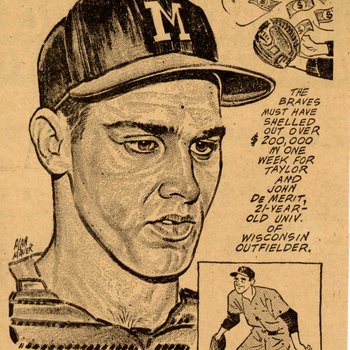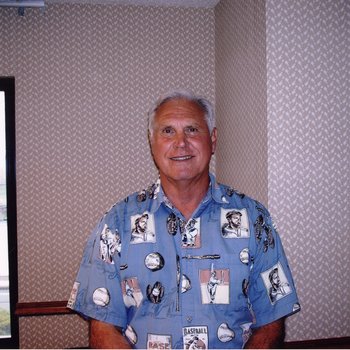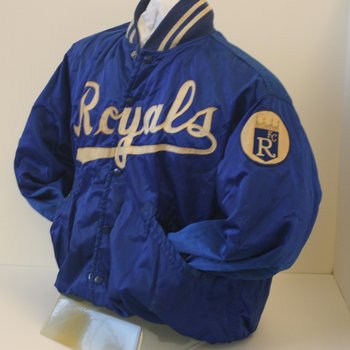David Adams and Sean J. McLaughlin, "The Life and Career of Hawk Taylor: The Bob "Hawk" Taylor Baseball Collection"
"I take no credit for wins, 'cause I don't want the blame for losses." - Hawk Taylor to Mets announcer Ralph Kiner, after catching a game which the Mets won.
Robert Dale Taylor, better known as Bob “Hawk” Taylor, was a professional Major League Baseball player whose career spanned from 1957 to 1970 as a catcher and outfielder for the Milwaukee Braves (1957-1963), the New York Mets (1964-1967), the California Angels (1967), and the Kansas City Royals (1969-1970). Playing 394 games over 11 seasons, he was best known as part of the 1957 World Series-winning Milwaukee Braves team managed by Fred Haney.
***
America’s pastime has held onto a devoted fanbase in an increasingly crowded 21st Century sporting landscape in large part thanks to the grace of the game and a pace of play that has encouraged a rich tradition of storytelling that sets it apart from all other American sports. Its fans are largely characterized by an inexhaustible thirst for strange or compelling character sketches, esoteric statistics, and meandering discussions of nearly every subject with even a remote connection to the game. They are uniquely programmed to listen in.
Back in 2018, Wrather West Kentucky Museum at Murray State University was gearing up for a major fall sports exhibit called Hometown Teams: How Sports Shape America as part of a Kentucky Humanities-facilitated collaboration with the Smithsonian’s Museum on Main Street program. We at the museum got a tip that a local family out on Kentucky Lake had plenty of stories to share and that it just might be willing to lend us some baseball memorabilia to put on display. This lead certainly did not disappoint.
The Taylors are a baseball family through and through. They were incredibly generous with their time and provided us with a substantial loan that made our 2018 exhibit shine. They more recently converted a large part of their baseball collection into a gift to Pogue Library Special Collections and much of that collection has in turn made its way into this digital exhibit.
Marie Taylor is an accomplished pianist and music educator who worked for the university for many years, but she can regale you for hours with baseball anecdotes on everyone from Casey Stengel to Joe Torre. Her eldest son Bruce was a Murray High standout (and later coach) who played for the Vanderbilt Commodores during the 1984 and 1985 seasons, while her youngest, Sam, manned the outfield for the University of Kentucky Wildcats before spending six seasons in the Philadelphia Phillies system from 1989 to 1995. All three developed a love of the game from family patriarch Robert “Hawk” Taylor (1939-2012), the finest ballplayer nearby Metropolis, Illinois has ever produced and a veteran of 11 big league seasons from 1957 to 1970.
It is not the “making it” aspect of Hawk’s baseball story that is so compelling, but rather the early combination of sublime talent and a run of bad luck that prevented him from fully reaching his star-quality potential. When dedicated fans read his biography, they encounter so many random twists and turns that they cannot help but imagine an alternate timeline where he won regular playing time and even made an All-Star team or two over the course of a long and productive career. In the world as it was, however, he turned into a complimentary player who got steady work with 1960s expansion franchises and enjoyed occasional moments of glory, such as taking Dodgers legend Sandy Koufax deep. Hawk was never bitter over what might have been, though, and wholeheartedly devoted himself to a family that fondly remembers him as a beloved husband and father.
Before Major League Baseball instituted its amateur draft in 1965, there was a free-for-all for young players as teams tried to out-scout and out-spend their rivals for new talent. In the spring of 1957, all eyes in the baseball world were on the most exciting 18-year-old high school player in the country, Hawk Taylor, a young man who had a very big decision to make. Within hours of his graduation on May 30, he signed the biggest rookie contract ever at $119,000 (roughly $1.32 million in 2024), and was en route to joining a powerhouse, Hall-of-Famer-laden Milwaukee Braves team that was destined to win a World Series that fall. He was quite simply on top of the world.
Signing with the Braves put Hawk on a roster with true legends of the game including Hank Aaron, Warren Spahn, and Eddie Mathews, but there was an unfortunate downside to being the youngest player by far on a club that was this talented. In retrospect, it became clear that the Braves had created a logjam at catcher with Hawk sandwiched between two perennial All-Stars (first Del Crandal then Joe Torre) and, worse, rushed Hawk to the majors only to sit on the bench for two crucial developmental years when he should have been given a chance to play regularly in the minors. After mastering AA and AAA later during the 1959 and 1960 seasons, Hawk returned to the Braves only to be immediately called up for military service, missing most of the 1961 and 1962 season as a result. The following year, it looked like he was in a good position to win playing time as a backup catcher and part time outfielder, but he then suffered a freak spring training injury that took him off the field for an extended period once again.
After all of this hard luck, Taylor moved on from the Braves in 1964 and settled into a role that kept him in the big leagues through the 1970 season: a journeyman backup catcher/outfielder/pinch hitter for the expansion Mets and Royals. As his career reached its twilight and the family could finally settle down, they chose to move out to a leafy lakefront property just east of Murray with all sorts of opportunities to hunt and fish. Murray State baseball coach Johnny Reagan clinched the deal when he enthusiastically invited Hawk to join the staff of what was then an excellent NCAA Division I program while Hawk was working on his own university degree.
Even before Hawk was done playing baseball, he gave back to the community for many years as a coach. Imagine how delighted Murray State players were to have an active major leaguer come in to coach for their fall camp in 1970! After his playing career was over, he taught physical education and coached baseball at Lambuth College in Jackson, Tennessee, and then closer to home at the high school and junior college levels in Paducah. His family talks of him with a genuine reverence and it is clear to all who know them that Hawk was a fundamentally decent man who carried himself with the right sort of values. We were very proud to highlight his career and display memorabilia from his playing days in the baseball section of our sports exhibit at Wrather Museum in 2018 and are even happier still to add this new digital exhibit.
– Dr. Sean J. McLaughlin, April 2024
The Bob "Hawk" Taylor Baseball Collection spans more than Hawk's baseball career—alongside memorabilia and material from his days in MLB including videos and autographs, there is Hawk's correspondence with his wife, Marie, letters from Hawk's mother, family photographs, a selection of Hawk's undergraduate coursework at Murray State University, his notes on coaching, newspaper clippings and scrapbooks, Hawk's military uniforms, and a wealth of other items.




